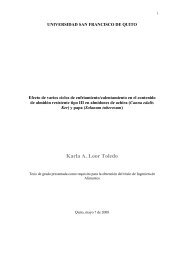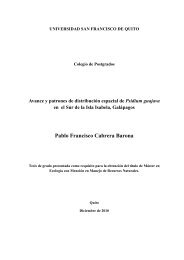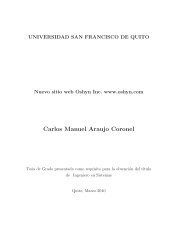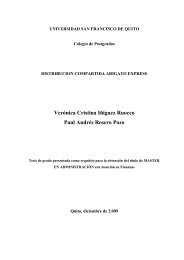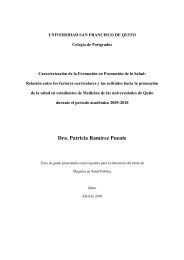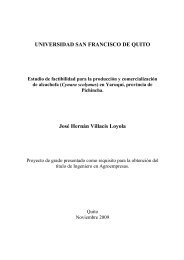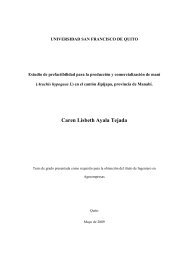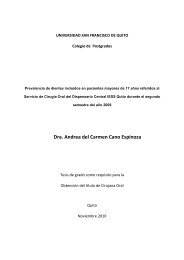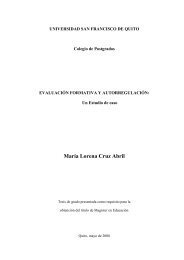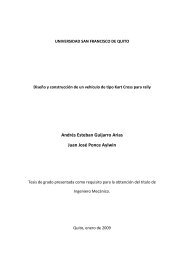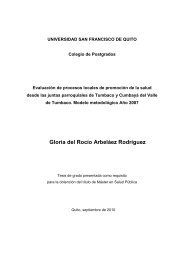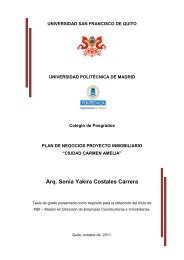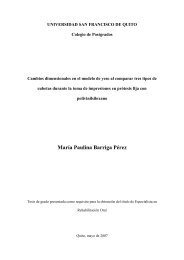Myriam Elizabeth Saavedra López - Repositorio Digital USFQ ...
Myriam Elizabeth Saavedra López - Repositorio Digital USFQ ...
Myriam Elizabeth Saavedra López - Repositorio Digital USFQ ...
Create successful ePaper yourself
Turn your PDF publications into a flip-book with our unique Google optimized e-Paper software.
3.4.2 The nearest neighbour distance function G<br />
According to Baddeley et al (2004, 51-52) the nearest neighbour distance distribution is a related con-<br />
cept to the Empty Space Function F . Then, let X be a stationary point process in the d-dimensional<br />
Euclidean space. The nearest neighbour function G is the cumulative distribution function of the<br />
distance d (x, X\x) from a typical point x ∈ X to the nearest other point of X. That is:<br />
G (r) = P x (d (x, X\ {x}) ≤ r) = P x (NX (b (x, r) \ {x}) > 0) (12)<br />
where NX (b (x, r) \ {x}) is the numbers of event inside the ball b with radius r and center x and P x<br />
a probability. Using the Campbell-Mecke formula, the formula (9) is written as<br />
G (r) =<br />
E x∈X <br />
W I {d (x, X\ {x}) ≤ r}<br />
E [X (W )]<br />
where W is a window which contains the spatial points. See the folowing illustration:<br />
12<br />
(13)



